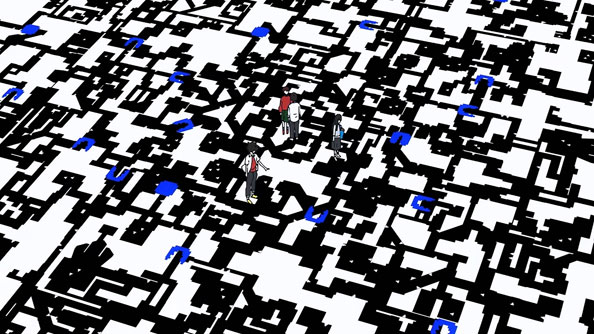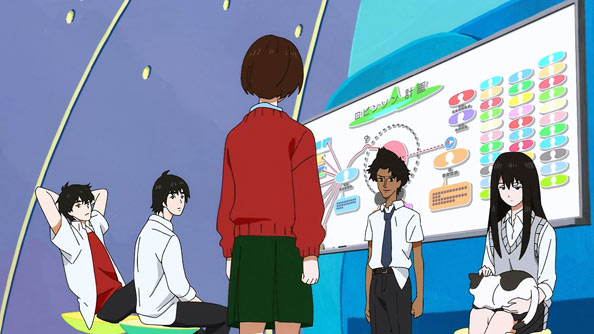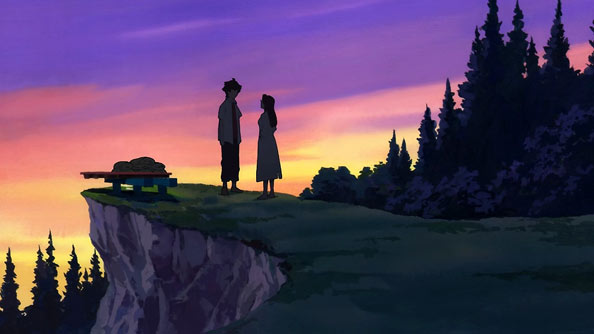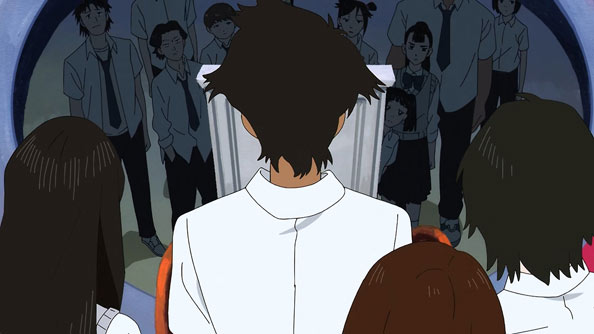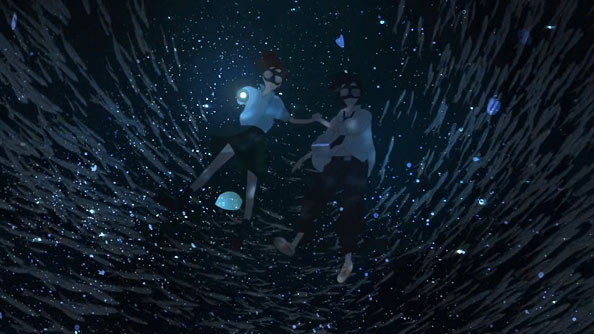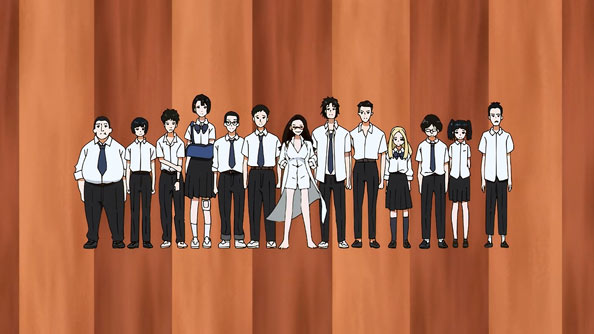Sonny Boy loves starting episodes in media res, and this week is no different, as we sit in on the 601,344th meeting of the Drift Victims Society. If it’s a weekly meeting, that means it’s been going on for 11,564 years, give or take a decade. Needless to say, the majority of those assembled are looking for someone to blame for this predicament.
Now they know it’s Nagara, and they condemn him and promise justice, whipping the enraged mob into a bitter froth.
Meanwhile on the island, the Mizuho, Pony, and Yamada watch Hoshi’s faction loads up the Ark with supplies in preparation for a journey from which they won’t be returning. Yamada, who’s been around as long at least half of those meetings, describes the thousands of other castaways, and how it’s taken thousands of years for them to figure out how to travel between worlds.
That this newest class was able to do it in a matter of weeks or months means whatever this “culling” is that God is doing, it’s breeding more capable students with each generation.

When Nagara liberates Rajdhani’s ant farm before he lets the ants start eating each other, he comes upon an exercise bar, and when he decides to flip himself on it. That’s when the episode goes full Patema Inverted, as his world is flipped upside down. A strange student who is completely covered by a giant folded umbrella greets him before he starts falling…up.
Nagara wakes up in the middle of a shift, with helmeted students working tirelessly like worker ants building an endlessly tall tower (but oddly enough, carrying the building blocks downward). Nagara being Nagara, he tries to keep his head down and roll with the punches. He’s bailed out and befriended by the kindhearted Futatsubushi…who’s been at this for over two centuries.

Futatsubushi is charmed by Nagara’s “new guy” aura. Everyone in this world were students of the same school, but now all they’re doing is building the tower…and eating gross invertebrates and insects during their breaks. Hakuna Matata, I guess. Futatsubushi makes it feel like a simple, honest life, even if its seemingly dead-end one.
That night, Nagara is ready to return home, only to find he can’t use his powers. That’s because the “Host” or boss of this world—a guy with glasses who wears a tall sock on his head and is umbrella guy’s associate in an elite group of castaways called Beatnik—is able to nullify those powers. The two hang out atop Babel, basically waiting to see if and when Nagara can figure his way out of this place.

While striking out with Futatsubushi to discover the urban legend of shooting stars, Nagara instead discovers a macro version of the predatory luminescent bugs Rajdhani once showed him. We don’t watch his gruesome “end”—only his screams—but before that he has a very bittersweet monologue about how it’s important to believe in nonsense or continuing to go after a hope, even if it’s false…because otherwise, what is there?
The question of “if not this, than what?” seems foremost in the mind of Nozomi as she watches the cubic Ark carrying Nozomi and most of the rest of the class off to parts unknown grow smaller and smaller in the sky before disappearing altogether. It’s such a simple image as presented, but so haunting and lonely. Meanwhile, the prickly but loyal Mizuho searches diligently for her friend Nagara.
Futatsubushi probably inspired our guy to keep going forward and putting in an effort, even if Hoshi has said many times before that getting home is not in the cards. After remembering when he’d try to flip on the exercise bar as a child while another kid nicknamed “Koumori” (“Bat”) flipped with ease.
Once he’s up at the top of Babel, he walks straight out the railing-less balcony…and re-inverts to his original orientation. Since he figured things out, both Sockhead and Koumori (the same kid he saw that day in his youth) let him go.

No sooner does Nagara return, having been found by Mizuho and Yamada, is it revealed that Rajdhani is also off on his own personal voyage of discover and wonder. Nozomi, a tearful Mizuho, and Nagara all give him big hugs, and I have to admit this completely unexpected goodbye scene really made the air in my room dusty.
With Rajdhani gone, apparently the only ones still on the island are Nagara, Nozomi, Mizuho, Yamada, Asakaze, and possibly the members of Aki-sensei’s faction that didn’t leave on the Ark (Aki-sensei, it’s revealed, is just another student). I almost wish it’s just the five of them left. While the ideas and allegories are growing bigger and more complex, I’m excited at the prospect of the cast getting drastically stripped down to the basics.

















